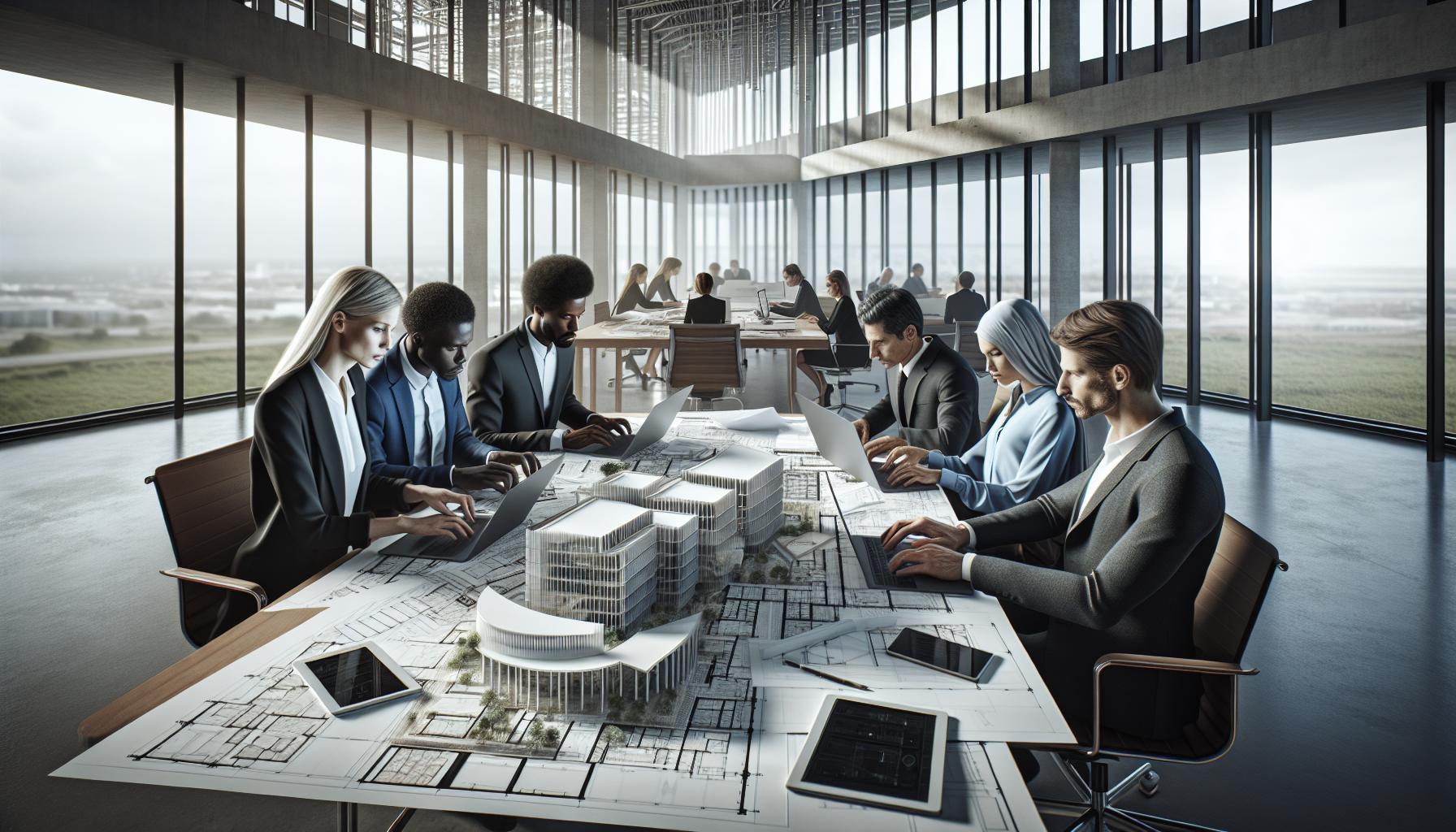In the fast-paced world of architecture, technology plays a crucial role in transforming creative visions into tangible structures. Architects rely on a variety of software tools to enhance their design process, streamline collaboration, and ensure accuracy. From drafting initial concepts to managing complex projects, the right software can make all the difference.
As the industry evolves, so does the software landscape. Architects now have access to powerful programs that cater to every aspect of their work, whether it’s 2D drafting, 3D modeling, or project management. Understanding what software architects use not only highlights the tools that shape modern architecture but also sheds light on how these tools can elevate design practices and improve overall efficiency.
Key Takeaways
- Diverse Software Landscape: Architects utilize various software tools, including 2D drafting, 3D modeling, rendering, and project management solutions, to enhance their design workflows and efficiency.
- Essential Software Categories: Key categories of architectural software include AutoCAD for 2D drafting, Revit for Building Information Modeling (BIM), and SketchUp for user-friendly 3D modeling.
- Visualization Importance: Visualization software such as V-Ray and Lumion improves client presentations and feedback by transforming 3D models into realistic images and interactive environments.
- Project Management Tools: Tools like Trello and Asana facilitate organization and collaboration, ensuring architects can manage tasks effectively, keep projects on schedule, and enhance team communication.
- Emerging Technologies: Advanced technologies, including BIM and Virtual Reality, are redefining architectural design and collaboration by providing detailed data integration and immersive visualization experiences.
- Continual Evolution: The architectural software landscape continues to evolve, incorporating innovations that enhance precision and creativity in modern architectural practices.
Architectural Software
Architects employ a range of software tools to streamline their workflow and improve design outcomes. These programs assist in drafting, modeling, and project management, catering to different phases of the architectural process. Major categories include:
- 2D Drafting Software
- AutoCAD: A widely used tool for creating detailed 2D drawings and plans.
- DraftingTools: Delivered for purposes such as technical drawings and schematics.
- 3D Modeling Software
- Revit: This Building Information Modeling (BIM) software enables comprehensive 3D visualization and data management.
- SketchUp: Known for its user-friendliness, it allows architects to create quick 3D models.
- Rendering Software
- V-Ray: A powerful rendering engine for producing realistic images from 3D models.
- Lumion: Focuses on fast visualization and offers real-time rendering capabilities.
- Project Management Software
- Trello: This tool helps in organizing tasks and tracking project progress through user-friendly boards.
- Asana: Used for team collaboration, it enables architects to assign tasks and manage deadlines efficiently.
- Collaboration Tools
- BIM 360: Facilitates better collaboration among project stakeholders by allowing shared access to models and documentation.
- Slack: A communication platform that supports real-time discussions and file sharing.
- Analysis Software
- Rhino: A 3D modeling tool used for complex geometries and analysis.
- Grasshopper: A visual programming language that extends Rhino’s capabilities, allowing for parametric design.
Architectural software continues to evolve, integrating new technologies such as virtual reality and artificial intelligence. These tools significantly enhance the precision and creativity of architects, addressing the demands of modern design and construction projects.
Types of Software Architects Use

Architects use various software categories to streamline their design processes and enhance collaboration. These tools cover design, visualization, and project management, enabling more efficient workflows and accurate results.
Design Software
Architects rely on design software for creating precise architectural drawings and plans. Prominent examples include:
- AutoCAD: This 2D drafting tool excels in technical drawing and documentation.
- Revit: A Building Information Modeling (BIM) software that supports multi-dimensional project development.
- SketchUp: A user-friendly 3D modeling application appreciated for its intuitive interface and functionality.
Design software plays a vital role in producing detailed layouts, ensuring architects translate their visions accurately into actionable plans.
Visualization Software
Visualization software enhances design presentations, allowing architects to communicate concepts effectively. Key tools include:
- V-Ray: A powerful rendering engine that provides photorealistic images from 3D models.
- Lumion: A visualization tool that simplifies the creation of immersive environments and animations.
- Enscape: A real-time rendering application enabling architects to navigate designs interactively.
These software options help architects convey their ideas to clients clearly, improving feedback and collaboration throughout the design process.
Project Management Software
Project management software aids architects in organizing and coordinating tasks. Essential tools in this category include:
- Trello: A visual project management tool that displays tasks in a user-friendly board format.
- Asana: A comprehensive platform for tracking project progress, assigning tasks, and setting deadlines.
- BIM 360: A cloud-based tool that enhances collaboration among project stakeholders.
Implementing effective project management software ensures architects keep projects on schedule and within budget, facilitating better communication among team members.
Popular Software Options

Architects utilize a variety of software tools to enhance design processes. The following are some of the most popular options in the industry.
AutoCAD
AutoCAD is a leading 2D drafting software widely used by architects. It offers features like precision drawing and a vast library of customizable components. Architects use AutoCAD for creating detailed plans, sections, and elevations. Its compatibility with other software ensures seamless integration into various workflows.
Revit
Revit serves as a comprehensive building information modeling (BIM) tool for architects. It enables real-time collaboration, allowing multiple users to work on the same model simultaneously. Architects rely on Revit for generating accurate 3D models and producing construction documents efficiently. Its array of features supports various stages of the design process, enhancing overall project coordination.
SketchUp
SketchUp is known for its user-friendly interface, making it accessible for architects at all skill levels. Architects use SketchUp for quick 3D modeling and conceptual design. Its extensive plugin library allows for customization, enhancing functionality for specific project needs. SketchUp’s ability to create visually appealing models aids in client presentations and design communications.
Emerging Technologies in Architecture

Emerging technologies significantly shape the architectural landscape, introducing innovative methods that enhance design and collaboration. Architects increasingly rely on advanced software tools that incorporate cutting-edge technologies to streamline workflows and improve project outcomes.
Building Information Modeling (BIM)
Building Information Modeling (BIM) transforms how architects design and manage buildings. BIM software, such as Revit and ArchiCAD, enables architects to create detailed 3D models that include not just the geometry of the structure but also information on materials, costs, and schedules. This comprehensive data integration fosters collaboration among all stakeholders—designers, engineers, and contractors—ensuring clearer communication and reducing errors. Additionally, BIM allows for simulations and analysis, enabling architects to assess sustainability and energy performance early in the design phase.
Virtual Reality (VR)
Virtual Reality (VR) provides architects with immersive experiences that enhance design visualization. Tools like Oculus Rift and HTC Vive enable stakeholders to explore architectural designs in a virtual environment before construction begins. This capability allows architects to identify design flaws and gather feedback proactively, improving project outcomes. Furthermore, VR fosters a deeper understanding of spatial relationships and user experiences, aiding in the creation of functional and aesthetically pleasing environments. As VR technology advances, its integration into architectural practices promises to revolutionize how architects convey their visions and engage clients.
The Role of Software in Architecture
The role of software in architecture is undeniable. As architects embrace advanced tools for design and collaboration, they enhance their ability to create innovative and efficient structures. With the integration of technologies like BIM and VR, the architectural process is becoming more streamlined and effective.
These tools not only improve accuracy but also foster better communication among teams and clients. As the industry continues to evolve, staying updated with the latest software will be crucial for architects aiming to push the boundaries of design and deliver exceptional results.